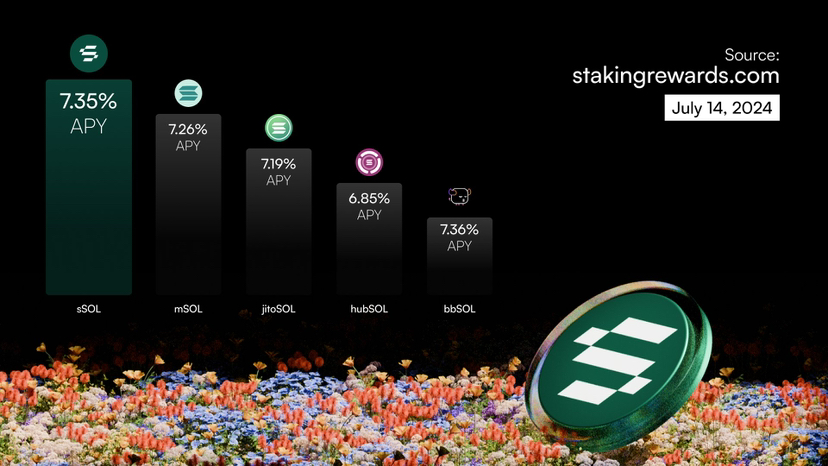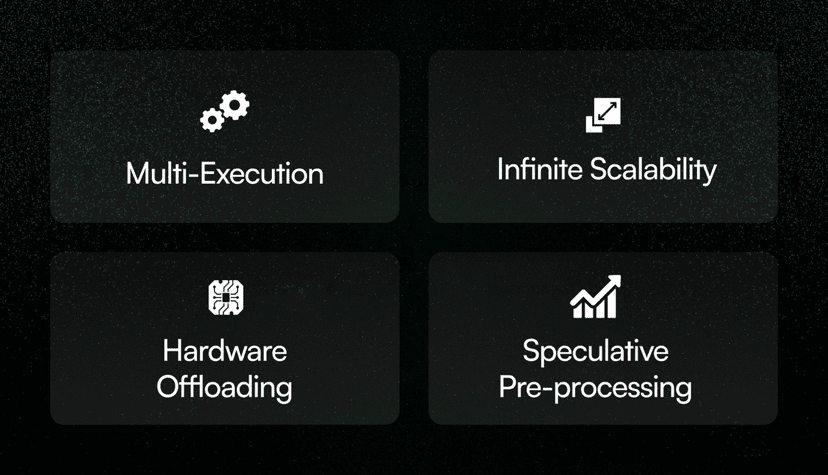What to solve? What to do? How to do it?
1. What problem does Solayer want to solve?
In the Solana ecosystem, speed has always been the biggest selling point. However, speed alone does not mean everything else keeps up. For example:
Low capital efficiency: Many SOL staked can only earn PoS yields, with limited asset utility.
Decentralized security: New projects find it difficult to establish their own secure node network.
Limited performance scalability: The more applications run on-chain, the greater the pressure on the execution layer.
Solayer is targeting these problems. Its goal is straightforward:
Reutilize the value of SOL (restaking);
Provide developers with a plug-and-play security layer.
Use hardware acceleration to pull performance up a notch.
2. Restaking: Let SOL make money.
In Solayer, you can put SOL or LST (like mSOL) in, and the system will generate sSOL. This sSOL represents your staked share, but unlike traditional staking, it is liquid.
You can:
Continue to use sSOL in DeFi, such as providing liquidity and collateral;
Or restake it to different services (AVS), such as oracles or cross-chain bridges, to provide security.
This way, you are not just waiting for the PoS yield but earning more. The yield structure provided by Solayer is approximately:
PoS: Basic 5–8%
MEV: Add an additional 3–5%
AVS: Can stack an additional 2–4%
Combined, it can reach about 10%–17%. This is much stronger than simple staking.
3. Stablecoin sUSD: A dollar alternative with returns.
Solayer also created a stablecoin sUSD. Unlike many USDT and USDC on the market, sUSD is linked to U.S. Treasury bonds, so it inherently generates returns, about 4–5%.
Users can treat sUSD as an ordinary stablecoin, but with an additional benefit: it can earn interest just by sitting there. This makes it not just a payment tool but also a 'wallet balance that automatically generates interest.'
In the DeFi ecosystem, this method is very attractive. It is both a stable asset and allows for continued restaking, making the combined yield more profitable than simply holding.
4. Hardware architecture: InfiniSVM
Another line of Solayer is the hardware acceleration execution layer InfiniSVM. This part is more fundamental, but focuses on two aspects:
Computational offloading: Some tasks that originally required node software to process are handed over to hardware like FPGA and SmartNIC, running faster with lower latency.
Network optimization: Using high-performance computing techniques like InfiniBand + RDMA for higher transmission efficiency.
The goal is to achieve millions of TPS and near-zero latency. This means greater throughput and a smoother experience for on-chain applications.
This part is actually more like Solana's acceleration engine, and if it is launched on a large scale in the future, it will significantly enhance the entire ecosystem's capacity.
5. How can users use Solayer?
If you are an ordinary user, there are several ways to participate:
1. Stake SOL / LST: Get sSOL back and then engage in DeFi; the yield is higher than simple staking;
2. Hold sUSD: It has an interest attribute compared to USDT/USDC, and can also be used in various protocols on Solana;
3. Waiting for the payment product: They are working on a non-custodial Debit Card, which may directly use on-chain assets for consumption in the future.
If you are a developer:
You don't have to build your own secure network; you can directly connect to Solayer's restaking security layer, saving a lot of costs and time.
Financing and endorsement
Projects of this scale cannot run without capital support. Solayer has already received investments from large institutions like Binance Labs and Polychain, raising over 20 million USD.
This means it is not just a small team playing around, but has a complete set of resources and support, making future implementation more likely.
Risk points
Of course, no matter how good the project is, there are risks:
High technical complexity: Hardware + on-chain solutions, with a high likelihood of issues.
Regulatory uncertainty: Especially for sUSD and physical cards, compliance issues are involved.
Competitive pressure: In the future, there may be more than one player in restaking, and the competition will become increasingly intense.
Solayer is currently working in two directions simultaneously:
Upper layer: Improving capital efficiency through restaking and sUSD, allowing SOL users to earn additional income.
Lower layer: Hardware acceleration through InfiniSVM helps the Solana ecosystem break performance bottlenecks.
It has capital, users, and a clear product path. If it can successfully launch the Debit Card and hardware architecture in the future, it will be one of the most significant infrastructures in the Solana ecosystem.
For ordinary people, the participation method is very simple: stake SOL and use sUSD; for developers, integrating Solayer can quickly obtain security and performance support. Whether it can grow large depends on the team's subsequent execution and market response.

